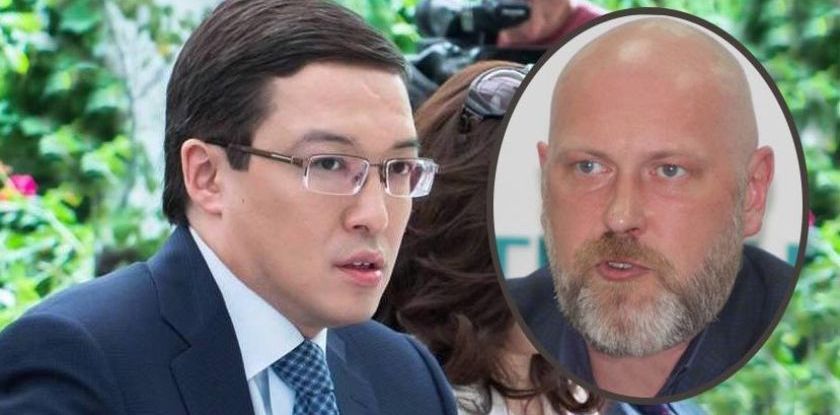Russian financial analysts are forecasting devaluation of Kazakh national currency down to 420-45- tenge for a dollar already this fall. However, chairman of the National bank of RK Daniyar Akishev notes that there are no reasons for lowering of the rate.
Head of the National bank has announced his opinion on the subject at the August 23rd press briefing having also said that fluctuations of tenge on July were also “provoked by talks on the media”.

At the same time, head of the group of Russian analysts GK TeleTrade Central Asia Sregey Polygalov at the press conference in Almaty named several factors that could facilitate the fall of tenge. Among them the most obvious one is lowering of oil prices.
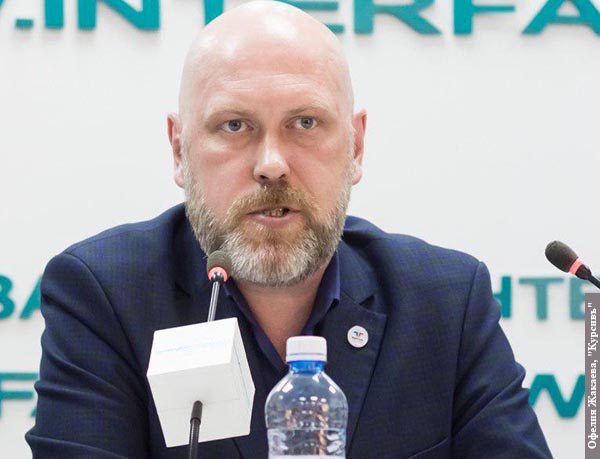
Thus, according to an updated July review of IMF on world economy World Economic Outlook, this and next years price of hydrocarbons on average will go down to a minimum of $3 per barrel.
“Oil prices have already fallen below $50 per barrel, and this price was established by the republican budget of Kazakhstan. At the same time average market value of dollar, established in the budget is 330 tenge for a dollar. When the oil price was above $50 the average of 315 tenge for $1 was sustained easily, but in the first half of June oil has fallen below $50 per barrel and Kazakhstan government has experienced problems with budget financing” – said Polygalov.
Plus the money from government budget goes not only to social sphere, medicine and education but also towards a vast number of government programs and projects. Thus in the words of the expert, the expenditures of EXPO Astana alone were a minimum of 3 billion dollars, and supposed profitability of such an event has made up around 280 million euro”. Difference needs to be compensated; however, organizers of EXPO cannot do this for now. Thus, he thinks that “in the beginning or end of November, National bank of Kazakhstan will pursue lowering of the rate o tenge, by the way of weakening of regulation of speculative deals at the stock exchange”.
Moreover, the support of the banking sector of Kazakhstan can play into hands of strong dollar, in his view. In his words, a significant expired liability has accumulated in the bank balances – almost in the 8,3 billion USD equivalent, of which 3.75 bil. is loans with an expiration of over 90 days. The reasons for non-return according to the expert are difficulties with the sale of products, bad quality of mortgages, lack opportunity among borrowers to quickly sell part of the assets in order to pay debt or difficulty among banks to implement loans using normal market prices. Payers, producers, financiers don’t have extra cash.

“Banks don’t have money for full-fledged crediting of the real sector of economy. Thus a launch of a program of increasing of financial stability of the banking sector will lower the pressure of capital” – in turn announced chief-analyst of GK TeleTrade Petr Pushkarev.

We remind that in the February of this year a resolution was made of allocating over 2 tril. tenge; to revitalize the banking system of Kazakhstan. Experts of Kazakhstani financial and investment markets assume that these funds will mostly be allocated towards solving of financial problems of Kazkommercbank.
“I assume that National bank of Kazakhstan will follow the Russian path and financial aid will be transferred cash. If this will be a single tranche in tenge then of course it will momentarily be reflected in the rate of national currency” – Pushkarev thinks.
Polygalov doesn’t agree with him, having noted that the help to banks in the amount of 2.4 tenge requires compensation: “Right now we are observing underpayment to the bidget of funds from raw material sales, and in this situation the easiest way to fill the budget is to make tenge cheaper”.
In the opinion of the analyst in order to keep the rate of tenge in current positions (320-330 tenge for a dollar) National bank will require 3-5 bil. USD of investments by the end of the year. But it is hard to receive such investments. “The only thing left is to raise the dollar rate to the level that will cover budget needs in tenge”. Polygalov explained.
There is another way of keeping national currency at the present level – sharp sequestering of the budget, lowering of salaries of government workers, cutting off pensions, but such a move will look like admitting of excessive spending of EXPO, and thus government likely won’t go for it.
Aside from the rate of tenge, at the press conference analysts of TeleTrade commented on the program of National bank of Kazakhstan on decapitalization and revitalizing of the banking sector of Kazakhstan.
We remind that on July 11 deputy chairman of the NB of RK Oleg Smoliakov announced that in the next 15 years banks of the country will receive 500 bil. tenge. “Program assumes allocation of the majority of these 500 bil. tenge to banks in the first one-two years, plus in 2022 participant banks have to completely form capital for covering of their expenses, and then return funds allocated within this program” – Pushkarev clarified.
In his opinion, this program could satiate banks with free “long” funds, but under condition that this sum will be increase in 2.5-3 times. “Current 500 bil. tenge make up only 18.5% of all expired credit portfolio of banks. The whole decapitalization together with the deposits of bank owners, who will have to replenish capital in the proportion of 1:2 with relation to National Bank’s deposits, will be at the level of around 25% of the expired portfolio. This is good and timely, but isn’t enough, and thus situation with crediting of economy will be decided much slower than one would want to”.
At the same time the expert doesn’t rule out that government support could have a “cumulative effect, and that private money would flow into participant banks – through growth of confidence in the future of these financial entities among clients”. But whether additional financing will take place and how far-reching it will be depends on the budget, and the government and regulator as experts think, apparently doesn’t have any more levers of influence, aside from weakening of the rate of national currency.
Moreover, according to market rules, the cheaper national currency the more competitive producing becomes and the less prime cost of the produced goods. However, could concentration of business in production and trade of raw materials lead the country to leading world positions?
In the opinion of experts of TeleTrade, this could be gauged by analyzing state of affairs in different economic unions. They compared CIS with a number of other similar unions and came to sad conclusion. Thus, based on IMF data, share of the commonwealth in the world GDP in 2016 made up 4.4% of world GdP with the population share of 3.9%. This is much lower than the share of other unions. For example NAFTA produces 19% of GDP, EU – 16.7% and Association of governments of South East Asia – 6.2%.
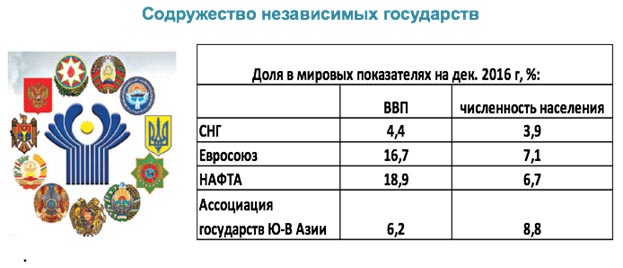
At the same time, Gdp per capita based on purchasing-power par has grown in the majority of CIS countries by over 3 times in 25 years. But leaders of growth are exporters of raw materials (Russia, Kazakhstan, Azerbaijan, Turkmenistan) thus their growth happened due to factors unrelated to CIS.
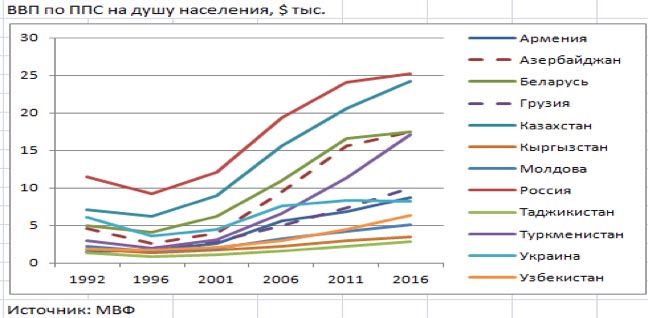
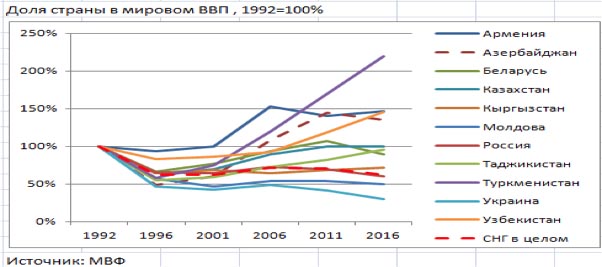
First-level banks and governments of these four countries fight budget deficits in the same way – they regularly fuel halting economies with government funds through depreciation of national currency.
“Nonetheless CIS cannot be called hopeless. Development of CIS as a post-Soviet space allow to use and stimulate production and distributing chains that have formed over decades, and widens market capacity” – said leading analyst of GK TeleTrade Mark Goikhman.

It is also worth noting that, in the opinion of the head of the group of analysts GK TeleTrade Central Asia Sergey Polygalov, similar processes are happening in Kazakhstan and Russia, including on the financial market, but the means of achieving goals are different.
Thus, answering the question of our journalist about how concentration of banking capital in the hands of the group of Timur and Dinara Kulibaev threatens Kazakhstan and whether similar development of events is possible in Russia, Polygalov said that “the concept of concentration of banking capital by the way of buying out of one bank by another is positive for financial stability”.
“Larger banks are acquiring smaller and problematic ones, which in the way is a form of sanitation of the banking system. As for the increase in the market share ownership of the Narodny bank of Kazakhstan after the purchase of Kazkom, nothing has fundamentally changed here. Narodny bank and Kazkom already were in well ahead in the ratings compared to other Kazakh banks. Based on capitalization, Narodny bank as of June 2017 takes the first position (691 243 52000 thousand tenge) Kazkom takes second place (443 706 257,00 thousand tenge). The closest one to them ForteBank has capitalization of 177 141 079,00 thousand tenge. And whether management is in the hands of various stockholders or is in the hands of single entity isn’t consequential in this case” Polygalov thinks.
In Russia, situation with revitalizing of banking sphere in his opinion follows a more radical path. Centrobank simply takes away the license of “bad” banks. Over 400 banks have already lost their license. What does that lead to? Russian banks without licenses in 2016 have deprived their depositors of almost 50 billion rubles; this is deposits that don’t fall under insurance.
He also noted that considerable presence of Russian banks in the Kazakh banking market is due to the fact that our countries have close economic ties. Russian banks don’t create competition on the domestic Kazakh market, since their priority is first and foremost servicing of cash flows between Russia and Kazakhstan. The rest of the sector that has to do with domestic lending and escrow is in the ownership of Kazakh commercial banks.

